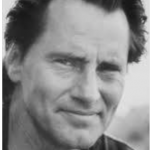 What I am writing will make no different in the situation I am describing. So why write it. It is like blowing in the wind. It must be said, but saying it will not impact the underlying structure that is in play in the world at this point in history. I suppose there is some value in understanding cause and effect, even if you are not in charge of cause and effect. That value includes not making things worse.
What I am writing will make no different in the situation I am describing. So why write it. It is like blowing in the wind. It must be said, but saying it will not impact the underlying structure that is in play in the world at this point in history. I suppose there is some value in understanding cause and effect, even if you are not in charge of cause and effect. That value includes not making things worse.
Let’s begin with the Russian strategy. In a way, it is very clear and simple, although the various tactics they use range from primitive to highly sophisticated. This is the strategy: in any democratic country, try to exploit internal conflicts with which to tear people apart. It’s a “let’s you and him fight” strategy. To do this, they must increase the emotional conflicts between groups. This became clear when they invented lies and placed them as if they were coming from Black Lives Matter, or right wing conspiracy groups. They were simply using anything in sight that would cause trouble. Most of the lies were seen for what they were, absurd and crazy reports that, by their extreme nature, had no integrity in logic or reason. From the Russian point of view, this is a shotgun approach. Rather than send out one or two lies, flood the marketplace with lies. Put them in the atmosphere to create a mood, a climate of suspicion. With enough lies going around from all sides, some of them will be taken seriously and reach critical mass. People on any side of an issue are prone to believe the lies that support their positions. And credit to the former comrades, they know their business. Rather than a debate about substance, it degenerates into an identity conflict. Hard to have a rational discussion when prejudice and tribalism are the deeper issues driving emotions and instincts.
The stages for this strategy include America, France, England, Germany, Spain, The Ukraine, Syria, Turkey, Iraq, African Countries, and on and on it goes. “Let’s you and him fight.” The more trouble, the more the Russians benefit, according to their strategy.
Why? What is so threatening to them about real democracy? And why is their favorite choice of forms of government autocratic dictatorships?
It is easy to be a troublemaker. The prototypical archetype is Iago in Shakespeare’s Othello. He is a master of feeding lies, undermining good faith, planting doubts and suspicion, knowing what buttons to push, and just how, and being the epitome of a destructive force. Often this person can appear in the guise of your best friend, just wanting to protect you from harm while, at the same time, looking for ways to stab you in the back.
This is one aspect of the human condition that we need to be aware of. We can be like Othello, hypnotized by our passions, and confused by our weaknesses. Our basic instincts are toward good will, hope, and love. Our darker angles are always easy to evoke by survival instincts fed by conflict and issues of identity.
The founders of America were some of the most gifted examples of the Age of Reason. They were not naïve to the human condition exactly as it is. They knew the dangers of mass hysteria, of authoritarian excess, of the corruption of power. Yet, they knew the other side of humanity too. Typical of the Age of Reason, they thought that the more people could be motivated by reality, facts, information, and reason, the more able they would be to come together in what they saw as enlightened self-interest. They knew that self-interest would lead people to narrow and destructive conflicts, but ENLIGHTENED self-interest would show people how their highest best interests were to join together to create the world they wanted. This principle was supported by public education, understanding that education could defeat prejudice.
This idea and distinction has been lost in modern times in which those who are educated are criticized for being “elitists.” The Age of Reason is over. Too often, we have entered into The Age of Belief, where various belief systems translate into identity issues, and vie against each other for converts or enemies. In the world of belief, objective fact doesn’t exist, or if it does, it is irrelevant. Reality, as in all cults, loses its credibility as a standard of measurement.
We can know all of this, and yet not change the world, at least right now, and at least not easily. That does not make us helpless. It can make us strategic. First of all, don’t join Iago’s team. Don’t be as easy a mark as Othello, who, in the play, ends up killing the thing he loves most, his wife Desdemona. Enlightened self-interest is a more demanding and sophisticated approach to life than looking out for “number one.”
Okay. I know I’m blowing in the wind. But sometimes, you have to blow in the wind for no other reason than some things need to be said.














